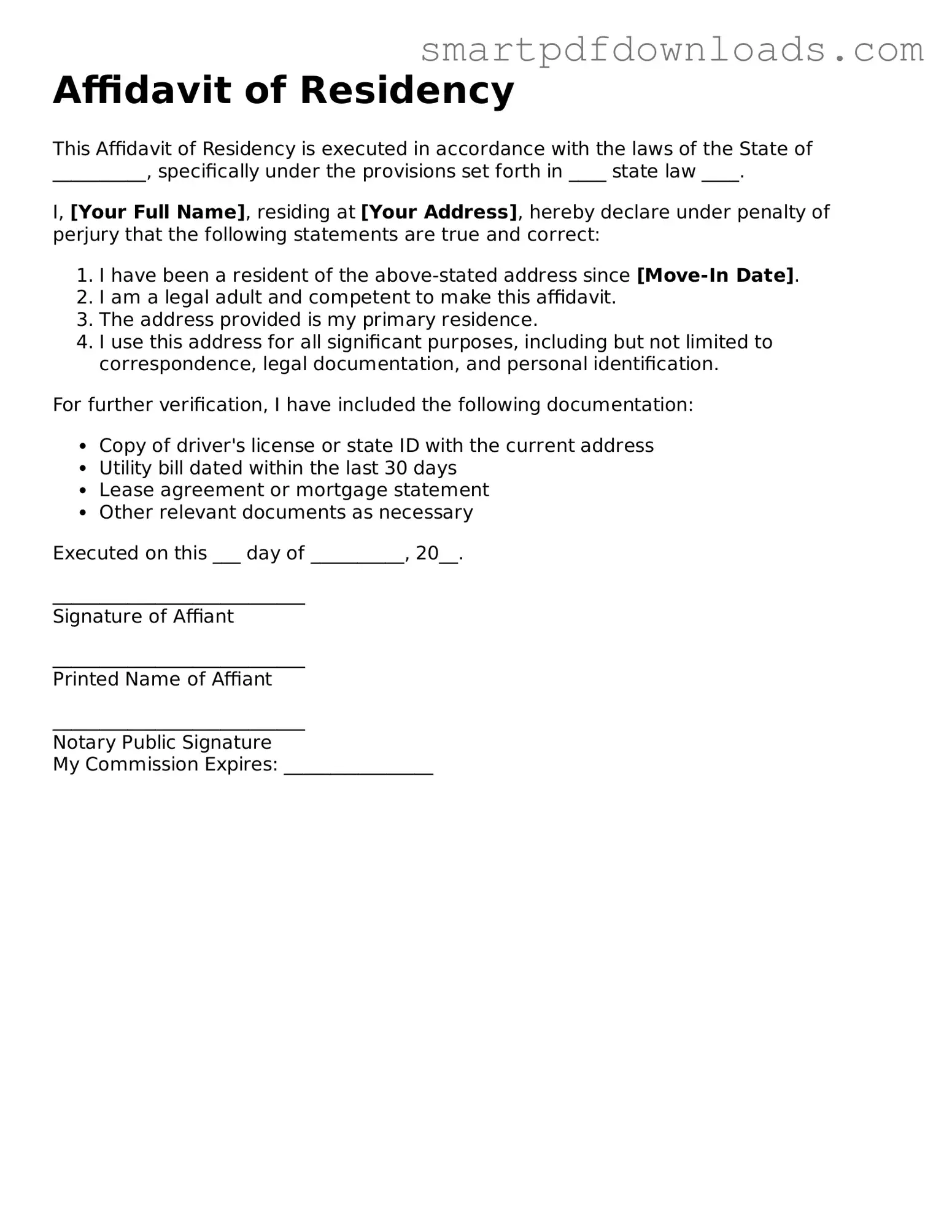Affidavit of Residency
This Affidavit of Residency is executed in accordance with the laws of the State of __________, specifically under the provisions set forth in ____ state law ____.
I, [Your Full Name], residing at [Your Address], hereby declare under penalty of perjury that the following statements are true and correct:
- I have been a resident of the above-stated address since [Move-In Date].
- I am a legal adult and competent to make this affidavit.
- The address provided is my primary residence.
- I use this address for all significant purposes, including but not limited to correspondence, legal documentation, and personal identification.
For further verification, I have included the following documentation:
- Copy of driver's license or state ID with the current address
- Utility bill dated within the last 30 days
- Lease agreement or mortgage statement
- Other relevant documents as necessary
Executed on this ___ day of __________, 20__.
___________________________
Signature of Affiant
___________________________
Printed Name of Affiant
___________________________
Notary Public Signature
My Commission Expires: ________________
